How many pots can a crackpot crock if a crackpot makes crockpot soap?
Posted on | June 24, 2012 | 6 Comments
It was another hot day. Which meant we had to play inside. Again. Although the boys were all up for going to see The Three Stooges at the $3 theatre. Not gonna happen, boys. I can manage a lot of Disney and Pixar. But a remake of The Three Stooges is a flick for The Other Half. That and any Adam Sandler creation.
So I sent the younger boys upstairs to watch their 6 hour video of Stooges episodes (yes, 6 hours!) and Big sat down at the kitchen table to paint his Apache helicopter model and help me make soap. Notice that Big was multitasking. Male multitasking! There is hope for the future.
Now there are a lot of tutorials for making homemade soap on the internet. You should read them. Do NOT rely upon what you read here. Because as the boys headed upstairs with their bags of microwave popcorn and juice boxes, Little glanced at all the supplies I was gathering and said, “Oh, you’re making soap. Gonna use the crackpot way again?” Which pretty much says it all.
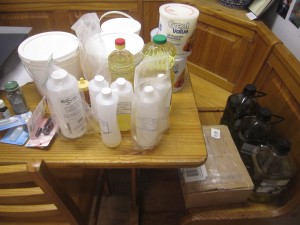 Like all the tutorials say, I start a soap session by gathering all my materials. I have a shelf where I keep most of my fats and oils, lye and scents, along with my stick blender and scale. I also gather up all the stainless steel and glass bowls we have in the kitchen for measuring and holding ingredients. I do not have a long list of safety equipment–goggles, aprons, gloves, etc. I settle for sending the boys upstairs and putting the dogs outside—–everyone knows that young children and pets are the source for 99.99999% of accidents. Without children and pets, the safety industry would be screwed. I also set a bottle of white vinegar somewhere within reach because supposedly white vinegar can counteract a lye burn.
Like all the tutorials say, I start a soap session by gathering all my materials. I have a shelf where I keep most of my fats and oils, lye and scents, along with my stick blender and scale. I also gather up all the stainless steel and glass bowls we have in the kitchen for measuring and holding ingredients. I do not have a long list of safety equipment–goggles, aprons, gloves, etc. I settle for sending the boys upstairs and putting the dogs outside—–everyone knows that young children and pets are the source for 99.99999% of accidents. Without children and pets, the safety industry would be screwed. I also set a bottle of white vinegar somewhere within reach because supposedly white vinegar can counteract a lye burn.
The next thing I do is get out my crockpots. Now I used to make cold process soap. Because I was stupid. Cold process soap involves waiting for the soap to cure for 4 or 6 or 8 weeks. During those 4 or 6 or 8 weeks you have to have a place to let the soap sit around. And I don’t know about you, but I don’t have any counters or shelves or racks that aren’t used on a daily basis or already full of other crap. Also, I never remember to make soap until I’ve already used up my last bar. So I’d have to buy soap from the store for a month while waiting for my soap to finish curing. Which is kind of like when I am milking twice a day but still buying milk from the store because we have bottle babies drinking it all. So I end up digging through the bathroom shelves, hoping for a hidden bar of soap that fell behind the first aid kit, and muttering the f word. You know—-frustrating.
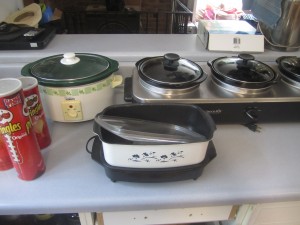 But now I make hot process soap. By heating the ingredients in a crockpot on a low setting, you cause the saponification to happen immediately. “Immediately” actually means over an hour or so when it comes to making soap. It sure beats the heck out of 4 or 6 or 8 weeks, though! I usually use a cheap crockpot that I bought from Goodwill several years ago when making soap. However, I decided this session was going to kill all the hot hours of the day so I pulled my crockpots from everywhere and hauled out extension cords and settled on making 6 crockpots of soap. You might be worried that I was going to damage my good crockpots. But the thing about making soap in a crockpot is that when it’s finished, it’s…..soap! It’s not like trying to scrape out crusted lasagna or burnt chili. Let the soap harden a bit, then run water in it, and it suds up and washes away. The only thing I was worried about was a brown out. How many crockpots should you run when it’s 94 degrees outside and the air conditioning is going full blast? Well, let’s be honest. I wasn’t worried about how many I “should” run. I just wanted to know how many I could get away with before having to reset the breaker.
But now I make hot process soap. By heating the ingredients in a crockpot on a low setting, you cause the saponification to happen immediately. “Immediately” actually means over an hour or so when it comes to making soap. It sure beats the heck out of 4 or 6 or 8 weeks, though! I usually use a cheap crockpot that I bought from Goodwill several years ago when making soap. However, I decided this session was going to kill all the hot hours of the day so I pulled my crockpots from everywhere and hauled out extension cords and settled on making 6 crockpots of soap. You might be worried that I was going to damage my good crockpots. But the thing about making soap in a crockpot is that when it’s finished, it’s…..soap! It’s not like trying to scrape out crusted lasagna or burnt chili. Let the soap harden a bit, then run water in it, and it suds up and washes away. The only thing I was worried about was a brown out. How many crockpots should you run when it’s 94 degrees outside and the air conditioning is going full blast? Well, let’s be honest. I wasn’t worried about how many I “should” run. I just wanted to know how many I could get away with before having to reset the breaker.
 Turns out you can run 7. 6 for making soap and 1 for cooking a turkey breast. Let’s face it, you won’t have time to make dinner if you’re making soap all day. So I put a turkey breast in a crockpot, covered it with mayo and french onion soup mix and let it go. I know what you’re thinking: “Are you guys still eating that turkey you butchered 2 years ago?” Yes, we are. Kind of. A friend of ours raised 2 turkeys for the state fair. After the fair we finished them on our farm and then butchered them. The deal was we kept the meat off one turkey and they got the meat off the other. Those birds produced a lot of meat. Each side of the breast weighed in around 4 lbs. And the legs were 5 lbs each. But long after we’d eaten our turkey, my friend called and said they just couldn’t bear to eat their part. You know, since they raised him from a poult and all. So they brought the meat back to us. Don’t you just love civilians?!
Turns out you can run 7. 6 for making soap and 1 for cooking a turkey breast. Let’s face it, you won’t have time to make dinner if you’re making soap all day. So I put a turkey breast in a crockpot, covered it with mayo and french onion soup mix and let it go. I know what you’re thinking: “Are you guys still eating that turkey you butchered 2 years ago?” Yes, we are. Kind of. A friend of ours raised 2 turkeys for the state fair. After the fair we finished them on our farm and then butchered them. The deal was we kept the meat off one turkey and they got the meat off the other. Those birds produced a lot of meat. Each side of the breast weighed in around 4 lbs. And the legs were 5 lbs each. But long after we’d eaten our turkey, my friend called and said they just couldn’t bear to eat their part. You know, since they raised him from a poult and all. So they brought the meat back to us. Don’t you just love civilians?!
Oh, wait. You weren’t wondering where I got the turkey from. You were wondering about the mayo and french onion soup thing. Well, I have a recipe that involves rubbing a turkey breast with french onion soup mix before roasting it. And there’s an old school tip that covering a turkey with mayo before roasting it keeps it from drying out without affecting the taste. I just combined the two ideas. I mean, how can you go wrong with mayo and french onion soup mix? You can’t. It was delicious. Especially served with fried zucchini from the garden and the last of the sweet corn from the farmers market. And the leftovers are going to make excellent paninis with provolone and Italian bread after church.
Jeez. What the heck were we talking about here? Oh, yeah….soap.
After setting up your equipment, you have the fun part of choosing your recipes. I have a folder of recipes that I like to use, although it can be annoying to try and match up the recipes with the ingredients I actually have on hand. I don’t keep a lot of fancy oils or butters so if it calls for something like apricot kernel oil, then I’m out of luck. Or I just substitute that ingredient for something that I do have. Just be sure to use a lye calculator like SoapCalc if you substitute ingredients. If you don’t, something terrible could happen. I don’t know what because I substitute ingredients all the time without using SoapCalc. Even though every tutorial or recipe warns me not to. I don’t mean to be that kind of irresponsible soapmaker. It’s just that the first time I opened SoapCalc, I realized that in order to use a lye calculator I had to know and understand terms like SAP (KOH SAP), fatty acid profile, iodine value, super fat % and INS. Of those words, super fat was the only one that had any meaning to me. For obvious reasons. Plus, I thought INS had something to do with a wall between the U.S. and Mexico and racial profiling in California. In any case, using the crackpot method, you just use the ingredients you have and keep that bottle of white vinegar close by. If something terrible ever does happen, I’ll let you know. At least it will be good for a blog post. Or a new kitchen after the first one burns down in a soapmaking explosion. Whichever.
Now I simply measured my ingredients. There’s an excellent lesson here for kids. It turns out that not all of elementary school was wasted—it is actually helpful to know the difference between volume and weight. At least during soap making. I can’t say I’ve used it at any other time in my life. Mostly because I don’t have a profitable, high paying job in the science industry like, for example, making cancer drugs. Or making methamphetamines. Which just goes to show that science is useful at both ends of society.
Please note that in the interest of creating an error-free and grammatically correct blog, I just got myself bookmarked by a government watchdog because I googled “methamphetamines.” Uncle Sam, in case you’re wondering, I was just trying to figure out how to spell it. Because WordPress keeps telling me that “methamphetamines” is incorrect and the internet seems to suggest that the plural of “methamphetamine” is “methamphetamine.” How can this be true? Shouldn’t it at least be “methampheti”? Or is this a “deer” and “deer” issue? Some sites even say there is no such thing as a plural of methamphetamine because it is a specific class of drug included in a class of drugs blah blah blahbitty blah. Oh NO! You just googled it and got bookmarked, too! I was going to tell you where you can buy lye online because hardware stores stopped selling it due to illegal drug manufacture, but I think we’d better stop while we’re ahead. You probably get a big red flag if you google “methampethamine” and “where to purchase lye” on the same day. I’m just sayin’.
Anyhoo.
 Most recipes use weight for the all ingredients. But occasionally some soapmaker will put the lye and oils in weight and the water or milk in volume. And a lot of times any additives like oats or herbals will be in a different form of measurement, too. Perhaps they think most people are used to measuring water and milk in a traditional volume measuring cup. Or maybe they don’t want to be hassled by using a scale for every single ingredient in a recipe. Or maybe they just enjoy trying to confuse us crackpot soapmakers so we mess up the measurements, never get our soap to come to trace or have any real exfoliating effect, and are forced to buy their homemade soap for $4.25 a bar at craft fairs. Remember, just because you’re paranoid doesn’t mean other soapmakers aren’t conspiring against you.
Most recipes use weight for the all ingredients. But occasionally some soapmaker will put the lye and oils in weight and the water or milk in volume. And a lot of times any additives like oats or herbals will be in a different form of measurement, too. Perhaps they think most people are used to measuring water and milk in a traditional volume measuring cup. Or maybe they don’t want to be hassled by using a scale for every single ingredient in a recipe. Or maybe they just enjoy trying to confuse us crackpot soapmakers so we mess up the measurements, never get our soap to come to trace or have any real exfoliating effect, and are forced to buy their homemade soap for $4.25 a bar at craft fairs. Remember, just because you’re paranoid doesn’t mean other soapmakers aren’t conspiring against you.
Bottom line is that you should check the recipe carefully and weigh or measure accordingly. Also, keep a spare set of batteries for your kitchen scale or you’ll be halfway through your crackpot soapmaking when the scale dies. And then you’ll find out it takes those darn watch batteries. And you’ll have to rush to Radio Shack for more batteries before your lye and oil mixtures are at different temperatures and you think that maybe by the time you include the expense of gas and mileage into your soapmaking, it would be cheaper to buy soap at a craft fair. Just another part of the conspiracy….
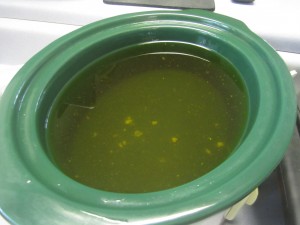 With my ingredients weighed, it was just a matter of getting the lye and oils to the right temperature. I melted my oils together in a crockpot if they were already partially dissolved and melted them in the microwave if they were still pretty solid. Basically, I just wanted the oils to be completely melted before I started adding the lye mixture.
With my ingredients weighed, it was just a matter of getting the lye and oils to the right temperature. I melted my oils together in a crockpot if they were already partially dissolved and melted them in the microwave if they were still pretty solid. Basically, I just wanted the oils to be completely melted before I started adding the lye mixture.
The lye mixture was made by carefully adding the lye to the water or milk. I added it together in the house, then carried it outside to stir it. The chemical reaction of lye and water lets off noxious fumes and lots of heat so as soon as the lye was dissolved, I just set it outside to cool and left it. Of course, I had to set it out on top of a metal shelving unit where the chickens, ducks, guineas, sheep, or barn cat couldn’t reach it or spill it. You would think that noxious fumes and extreme heat would keep critters from taking a drink out of it. If you think that, then you don’t have chickens, ducks, guineas, sheep, or a barn cat. Plus, you forgot what I told you about children, pets, and the safety industry.
Now back in the days of cold process soapmaking, I used to measure the temperature of the oils and lye mixture. When they got to 95 degrees, or 110 degrees, or whatever the recipe specified, then I combined them. Until some other soapmaker posted online that as long as the 2 different mixtures were close to the same temperature, you could go ahead and combine them safely. No thermometers needed. What??!!! Why would the recipe even include temperatures if this was the case??? Why do some soapmakers insist on making this process so much more complicated than necessary??? Are they part of some secret society or coven or something? Jeez, ladies, lighten up! Imagine how much more time you could spend soaking in the tub, enjoying the scent of your raspberry vanilla soap, if you didn’t have to try and get the lye mixture and the oils mixture to exactly 95 degrees at exactly the same time. Isn’t it enough that everyone wants the roast turkey and the sweet potato casserole to be hot at the same time, even though you only have one oven, every Thanksgiving??!!! Fight the power!
So, of course, guesstimating the temperatures is exactly the way I do it now. I feel the bottom of the bowl with the lye mixture to get an idea of how hot it is. I dip a finger in the oil mixture to get an idea of how hot it is. If they feel close, then I go ahead and add the lye mixture to the oil mixture. Which now that I think about it is exactly how I figure out if the replacement water for the fishtank is close to the water temperature that they already have. And I haven’t killed the fish yet. Well, there was that one time a fish died. But it had more to do with him throwing himself out of the fish net and onto the floor for a few seconds than with the water temperature. I think.
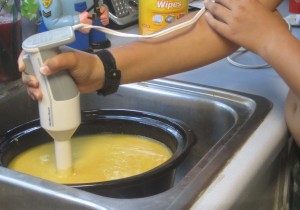 Once I had the mixtures safely combined, it was time to blend until trace. Trace is hard to explain so I included a pic of it. Well, kind of. If you zoom in on this picture you might be able to see that the mixture is at trace. Essentially, it means that if you let a trail of the soap mixture dribble onto the top of the batch it will stay there, visible, for a while before being absorbed back into the mixture. I would have taken better pictures of our soap at trace, but I was making 6 batches of soap. Simultaneously. So a lot of times Big was in charge of blending to trace while I was making lye mixtures or putting additives in soap mixtures that were already done. I don’t want to say that I bit off more than I could chew, but I will admit that photo opportunities were limited. And there might have been some cussing. Or freaking out. Just a few short bursts.
Once I had the mixtures safely combined, it was time to blend until trace. Trace is hard to explain so I included a pic of it. Well, kind of. If you zoom in on this picture you might be able to see that the mixture is at trace. Essentially, it means that if you let a trail of the soap mixture dribble onto the top of the batch it will stay there, visible, for a while before being absorbed back into the mixture. I would have taken better pictures of our soap at trace, but I was making 6 batches of soap. Simultaneously. So a lot of times Big was in charge of blending to trace while I was making lye mixtures or putting additives in soap mixtures that were already done. I don’t want to say that I bit off more than I could chew, but I will admit that photo opportunities were limited. And there might have been some cussing. Or freaking out. Just a few short bursts.
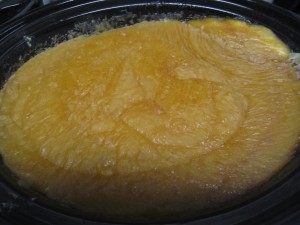 Once a soap batch reached trace, it was heated on low in the crockpot until it kind of curled over at the outside edges. This could take anywhere from 45 minutes to an hour or an hour and a half. Or longer depending on the recipe. When the curled edges appeared, I stirred it all together and then kept an eye on it until it looked kind of thick and waxy. At that point I needed to know if the saponfication process (the conversion of the oils and/or fats into a soap by combining them with an alkali, in this case, lye) was done or if the lye was still caustic. Apparently you can use a pH strip to test soap in the crockpot and see if the process is completed. A pH of 7 is considered neutral. But it was just as easy to stir the batch, let the spoon cool on the counter for a minute, and then chip a piece of dried soap off the spoon. I washed my hands with the soap chip and if it stung at all, then I knew it needed more time. I’ve never burned my hands doing this, but it has on occasion given me a good, strong tingling until it washed off. You might consider that lazier than buying a container of pH strips. I prefer to call it an “authentic” way to test homemade soap. You don’t think they had pH strips in pioneer days, do ya? Also, if I bought one more product that could be used in meth manufacture I’d probably have satellites aimed at my house.
Once a soap batch reached trace, it was heated on low in the crockpot until it kind of curled over at the outside edges. This could take anywhere from 45 minutes to an hour or an hour and a half. Or longer depending on the recipe. When the curled edges appeared, I stirred it all together and then kept an eye on it until it looked kind of thick and waxy. At that point I needed to know if the saponfication process (the conversion of the oils and/or fats into a soap by combining them with an alkali, in this case, lye) was done or if the lye was still caustic. Apparently you can use a pH strip to test soap in the crockpot and see if the process is completed. A pH of 7 is considered neutral. But it was just as easy to stir the batch, let the spoon cool on the counter for a minute, and then chip a piece of dried soap off the spoon. I washed my hands with the soap chip and if it stung at all, then I knew it needed more time. I’ve never burned my hands doing this, but it has on occasion given me a good, strong tingling until it washed off. You might consider that lazier than buying a container of pH strips. I prefer to call it an “authentic” way to test homemade soap. You don’t think they had pH strips in pioneer days, do ya? Also, if I bought one more product that could be used in meth manufacture I’d probably have satellites aimed at my house.
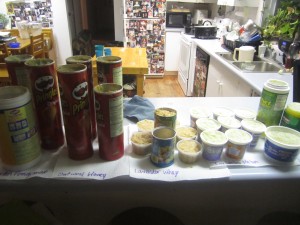 Once at the waxy stage, I had to stir in any additives (oats, corn meal, honey, essential oils, herbs, etc) quickly and then get it into the molds before it got too hard to scoop out. Pringles cans are my favorite molds. They make perfect round soaps. They are easy to peel off the soap once it hardens. Plus, you get to eat the Pringles first. 🙂 But I’ll use almost any container that is cylinder shaped and easy to get the soap out of. Except for a Parmesan cheese container. I will never use a Parmesan cheese container ever again. I thought the cheese container was a nice cylinder. Too bad the soap wouldn’t come out when it hardened. So I peeled off the label to try and cut away the plastic and I was shocked and appalled. Shocked because the container looked like this from the outside:
Once at the waxy stage, I had to stir in any additives (oats, corn meal, honey, essential oils, herbs, etc) quickly and then get it into the molds before it got too hard to scoop out. Pringles cans are my favorite molds. They make perfect round soaps. They are easy to peel off the soap once it hardens. Plus, you get to eat the Pringles first. 🙂 But I’ll use almost any container that is cylinder shaped and easy to get the soap out of. Except for a Parmesan cheese container. I will never use a Parmesan cheese container ever again. I thought the cheese container was a nice cylinder. Too bad the soap wouldn’t come out when it hardened. So I peeled off the label to try and cut away the plastic and I was shocked and appalled. Shocked because the container looked like this from the outside:
But underneath the label it looked like this:
How dare you, Superbrand?! I’m pretty sure those indents are to decrease the amount of cheese actually in the package while the wrapper makes me think it’s the same amount as usual. What, am I expected to read the weight on food labels now??!! As if grocery shopping isn’t a horrific enough experience already—what with the cookies that I don’t need being in the same aisle with the crackers that I have to have for my goat cheese. Now you not only cheat me out of Parmesan cheese, you ruin my soap!! Shame, shame, Superbrand. Oh, eventually Big cut the container apart with the box cutter and we salvaged the soap. It actually made some cute soap shapes in the end. But don’t think I’m over it, Superbrand. You’re dead to me.
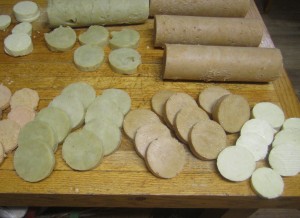 Good thing all the other soaps came out OK. As a matter of fact, by the time I was done, I had 153 soaps. Or, according to Little, 151 soaps. Or, according to Big, 157 soaps. Apparently soap is harder to count than it is to make. Go figure. Anyway, the most important things about today’s activity are that:
Good thing all the other soaps came out OK. As a matter of fact, by the time I was done, I had 153 soaps. Or, according to Little, 151 soaps. Or, according to Big, 157 soaps. Apparently soap is harder to count than it is to make. Go figure. Anyway, the most important things about today’s activity are that:
1) I didn’t have to go see The Three Stooges.
2) I didn’t cause a brown out.
3) I made 153 151 157 a lot of bars of soap.
4) I used up all my Pringles cans so now I get to buy and eat some more!
Long live soapmaking!
Comments

6 Responses to “How many pots can a crackpot crock if a crackpot makes crockpot soap?”
Leave a Reply
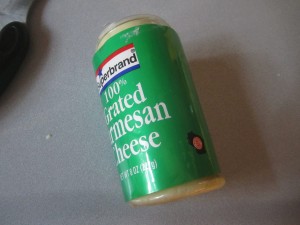
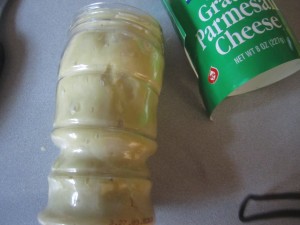
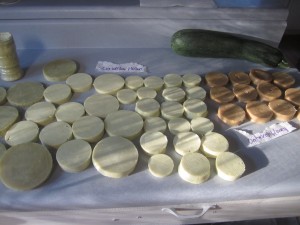
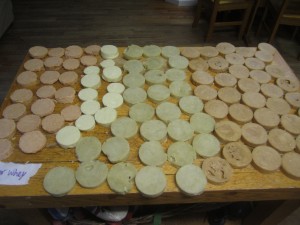



June 25th, 2012 @ 4:33 am
The last time I tried to make soap I ended making actual “hazmat” instead. The lye precipitated. I have the ruined furniture to prove it. And that all on my own without the help of any children or animals! But I’m talented that way.
What kind of fat do you use? Do you save bacon fat? A question which reminds me of the time I asked a butcher to save fat for me to render for soap. He saved FISH FAT. Which may be how I lost my license to make soap. I have some lye over here if you want it. And, um, do you sell soap?
June 25th, 2012 @ 7:54 am
I love your writing and yes, do you sell soap??
June 25th, 2012 @ 8:08 am
Wow! What a production!! I just go to Costco… boring me! 🙂 I have a much greater appreciation for the goat milk soap maker next to me at the farmer’s market. He must have perfectly rectangular Pringle cans at his disposal.. haha! Thanks for the lesson and I won’t use your name when The Man calls about you… love ya Sevie. love the 3 Stooges (real ones) too!
June 25th, 2012 @ 3:17 pm
I think I have enough lye for awhile (I buy it in bulk) but thanks! I don’t sell soap b/c I found it took the fun out of it if I was trying to make it perfect in order to sell. It’s much more enjoyable to throw some soap together and just enjoy it yourself in the shower—odd shapes, weird colors, and all 🙂
June 25th, 2012 @ 7:08 pm
I’ll just buy my homemade soaps, thanks. And, oh–just for the record, I couldn’t eat a turkey I’ve raised either. 😉
June 30th, 2012 @ 7:32 pm
I would have gone to see the Stooges again. Embarrassed to admit I actually chuckled in parts. I just WISH I could work up half the motivation you have for projects….